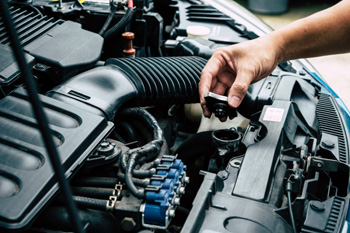Keeping your vehicle in top condition doesn’t always require a trip to the mechanic. One of the easiest and most important ways to care for your car is by regularly checking its essential fluids. Coolant, brake fluid, and transmission fluid all play major roles in keeping your car running safely and smoothly. Here’s a simple guide to help you check each one like a pro.

Why Checking Your Fluids Matters
Your car relies on fluids to cool the engine, transfer power, and ensure safe braking. If any of these fluids run low or get dirty, it can lead to costly repairs or dangerous driving conditions. Regular checks help you catch problems early and keep your vehicle operating at its best.
1. Coolant (Antifreeze)
Purpose: Coolant regulates engine temperature and prevents overheating or freezing.
How to Check Coolant:
-
Make Sure the Engine is Cool – Never open the radiator cap when the engine is hot.
-
Locate the Coolant Reservoir – It’s usually a translucent plastic tank near the radiator.
-
Check the Fluid Level – Look for the “FULL” and “LOW” indicators on the reservoir.
-
Inspect the Color and Condition – Fresh coolant is usually green, orange, or pink. If it looks rusty, cloudy, or oily, it may need to be replaced.
Tip: If the level is low, top it off with a 50/50 mix of coolant and distilled water unless your owner’s manual specifies otherwise.
2. Brake Fluid
Purpose: Brake fluid transfers pressure from the brake pedal to the brake system, allowing your car to stop safely.
How to Check Brake Fluid:
-
Locate the Brake Fluid Reservoir – Usually found near the back of the engine bay, close to the driver’s side.
-
Check the Level Against the “MIN” and “MAX” Lines – It should be closer to the “MAX” line.
-
Inspect the Color – Brake fluid should be clear to light yellow. If it’s dark, murky, or has particles, it may need to be replaced.
Caution: Low brake fluid can be a sign of worn brake pads or a leak. If the level keeps dropping, have your vehicle inspected immediately.
3. Transmission Fluid
Purpose: Transmission fluid lubricates gears and keeps your transmission shifting smoothly.
How to Check Transmission Fluid (Automatic Vehicles):
-
Warm Up the Engine – Run the car for a few minutes or take a short drive.
-
Park on Level Ground and Leave the Engine Running
-
Locate the Transmission Dipstick – Typically near the back of the engine bay. (Note: Some modern cars don’t have a dipstick and require a mechanic to check.)
-
Remove, Wipe, and Reinsert the Dipstick – Then pull it out again to check the level.
-
Inspect Color and Smell – Healthy fluid is pinkish-red and slightly sweet-smelling. Dark, burnt, or dirty fluid means it needs to be replaced.
For Manual Transmissions: Many do not have dipsticks. Checking requires accessing the fill plug beneath the car, which is best done by a professional.
How Often Should You Check These Fluids?
-
Coolant: Every 3 months or before long trips
-
Brake Fluid: Every 6 months
-
Transmission Fluid: Every month, or as recommended in your owner’s manual
Final Tips for Fluid Maintenance
-
Always use fluids that match your vehicle manufacturer’s specifications.
-
Keep a funnel and clean rags in your garage or trunk for quick checks and refills.
-
If you notice leaks, strange smells, or warning lights, don’t wait—visit your mechanic.
By checking your fluids regularly, you’ll extend the life of your vehicle, improve performance, and drive with confidence. With just a few minutes of attention, you can keep your car running like a pro.
Lim’s Auto Body is a full service auto body and mechanical repair shop locally owned and operated in Largo, Florida. For more information, go to our web site www.limsautobody.com or call (727) 422-3232.
